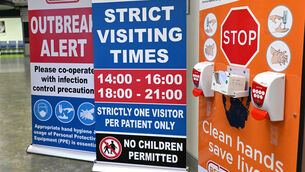INMO: May’s trolley figures were worst on record

The nursing union’s trolley/ward watch count recorded 9,091 patients who had to wait for an in-patient bed. That is more than twice the figure for the same month in either 2006, 2007, 2008 or 2009.
The INMO said University Hospital Limerick with 858 and Cork University Hospital with 826 were the two highest recorded in May.













